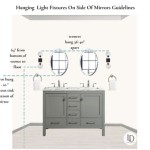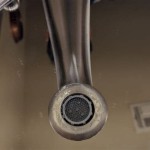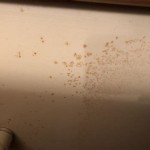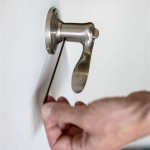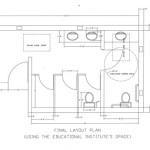Understanding Offset Bathroom Vanity Drain Pipes
Bathroom vanity drain pipes are essential components of a bathroom plumbing system. They are responsible for carrying wastewater away from the sink and vanity to the main drain line. In standard installations, the drain pipe is positioned directly below the vanity sink. However, in some cases, due to existing plumbing configurations, structural limitations, or design choices, it becomes necessary to use an offset drain pipe. This is where the drain pipe is positioned at an angle relative to the vanity sink, requiring a specialized fitting to connect the two. This article will delve into the intricacies of offset bathroom vanity drain pipes, exploring their purpose, installation process, and considerations for optimal performance.
The Purpose of Offset Bathroom Vanity Drain Pipes
Offset drain pipes serve to accommodate situations where the vanity drain location doesn't align with the main drain line. This is common in scenarios where: * **Existing Plumbing:** The existing drain pipe may be in an inconvenient location, making a direct connection to the vanity impossible without extensive and costly modifications. * **Structural Limitations:** Obstacles like load-bearing walls or beams may prevent the drain pipe from being placed directly below the vanity sink, necessitating a change in direction. * **Design Choices:** Architectural designs, particularly in older homes, may have positioned the vanity drain in a location that requires an offset to connect to the main drain line.
Installation of Offset Bathroom Vanity Drain Pipes
Installing an offset bathroom vanity drain pipe involves several steps, ensuring a leak-proof and functional connection. The process typically includes: * **Choosing the Right Fittings:** The key element in installing an offset drain pipe is selecting the appropriate fitting to connect the vanity drain to the main drain line. Commonly used fittings include: * **Offset Trapped Drain:** This fitting combines a drain trap with an offset, offering both water sealing and a directional change in the drain pipe. * **Wye Fitting:** This fitting branches off from the main drain line, allowing for an offset connection to the vanity drain. * **45-Degree Elbow:** This fitting provides a gradual angle change in the drain pipe, making it suitable for slight offsets. * **Cutting and Connecting the Pipes:** The next step involves cutting the pipes to the appropriate lengths and connecting them using solvent cement or threaded couplings. Precision is crucial to ensure a tight and secure connection. * **Securing the Drain Pipe:** The drain pipe is typically secured with hangers or clips to the wall or floor joists, preventing sagging or movement over time. * **Testing for Leaks:** Once the installation is complete, it is essential to test for leaks by running water through the vanity sink and checking all connections for any signs of leakage.
Considerations for Offset Bathroom Vanity Drain Pipes
When planning or installing an offset bathroom vanity drain pipe, several factors must be considered for optimal performance and longevity. These include: * **Angle of Offset:** The angle of the offset can impact the flow rate of wastewater. A steeper angle can increase the risk of clogging, while a shallower angle may require longer pipe runs and potentially increase the risk of odor. * **Pipe Size:** The size of the drain pipe should be sufficient to handle the volume of wastewater generated by the vanity sink. A smaller pipe can lead to clogging and slow drainage. * **Slope:** The drain pipe should be properly sloped to ensure proper flow of wastewater to the main drain line. A minimum slope of 1/4 inch per foot is generally recommended. * **Material:** Drain pipes can be made from various materials, including PVC, ABS, and copper. The choice of material depends on factors such as cost, durability, and compatibility with other plumbing components.
Offset bathroom vanity drain pipes are an indispensable part of modern bathroom plumbing. They offer flexibility and adaptability in accommodating unique plumbing configurations and design choices. Understanding the purpose, installation process, and considerations for offset drain pipes can help ensure a functional and aesthetically pleasing bathroom space. By carefully selecting the right fittings, ensuring proper slope and pipe size, and conducting leak tests, homeowners can enjoy a reliable and efficient bathroom vanity drain system that effectively discharges waste and maintains optimal drainage performance.
Pin On Flip Design
Hi I Am Moving My Vanity Sink From The Left Side Where Plumbing Is Coming Out Of Wall To Cent Bathroom
Uln671 Master Plumber 1 4 Offset Grid Strainer Bathroom Sink Drain Chrome Amre Supply
Ez Flo Chrome Bathroom Offset Drain In The Sink Drains Stoppers Department At Com
The Plumber S Choice 1 2 In Polypropylene Offset Trap For Tubular Drain 22212p Home Depot
This Is What I Need To Do Offset Bath Sink Okay Plumbing Diy Home Improvement Diyroom Sinks Problems
Vanity P Trap Weird Configure Diy Home Improvement Forum
Snappytrap Snappy Trap Universal Drain Kit For Bathroom Sinks Black Adapts To 1 4 In 2 Sink Drains And Wall Pipes The Under Plumbing Department At Com
How To Install A Flexible Waste Pipe When The Drain Doesn T Line Up Handyman S Daughter
How To Hide Plumbing In Your Bathroom Victoriaplum Com
Related Posts

